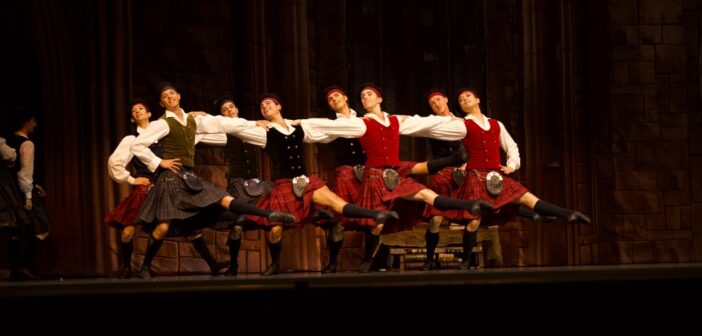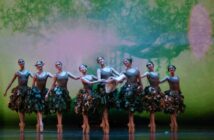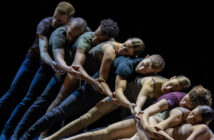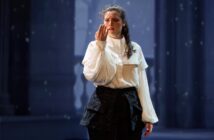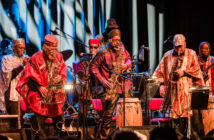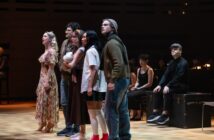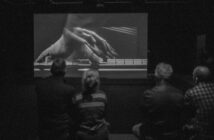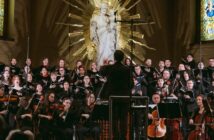La Sylphide is an important ballet, but one that few of today’s ballet fans have ever seen. Alberta Ballet makes the case for it to be performed far more often. Not only is it key to understanding the foundations of ballet, it’s also a lot of fun: a tragedy that does not make you weep, with beauty enough to make you smile.
La Sylphide — a modern ballet
At nearly 200 years old, La Sylphide was the first “modern” ballet where a ballerina, supported by a large female corps de ballet, became the focus of the story. It was also the first ballet to feature women dancing en pointe as more than just a stunt. Also, its original principal ballerina, Marie Taglioni — whose father choreographed the first version of the ballet for her in Paris in 1832 — introduced the long, bell-shaped tutu with a fitted bodice forever after associated with Romantic ballet.
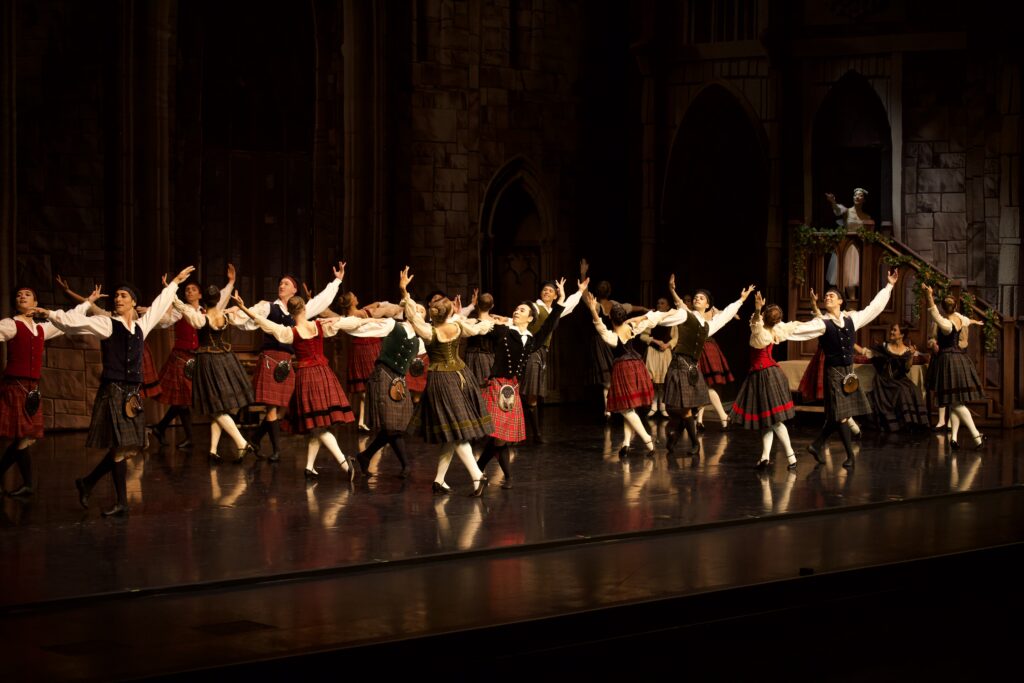
Artists of Alberta Ballet in La Sylphide. Photo: Aaron Anker
Alas, however, while the tutu remains, Filippo Taglioni’s choreography does not. Danish choreographer August Bournonville saw the original La Sylphide in 1894 and immediately acquired the scenario by Adolphe Nouritt, but he either could not afford (so one story goes) or did not like (says another) the score. Bournonville commissioned new music from the nineteen-year-old Baron von Løvenskjold, made some adjustments to enhance the lead male role. He also shifted emphasis of the story from the lure of an unattainable ideal to the value of an ordinary domestic life, and then premiered his own version in 1836.
A La Sylphide from the source
For Alberta Ballet’s production, seen in Calgary on September 13 and 14 with two different sets of principals, artistic director Francesco Ventriglia undertook eight months of research to try to tease out the Taglioni in the Bournonville choreography and to understand how each used mime to tell their stories. He then had just four weeks to prepare his company, some 40 strong for this production, most of whom had never danced in the Bournonville style or worked in mime.
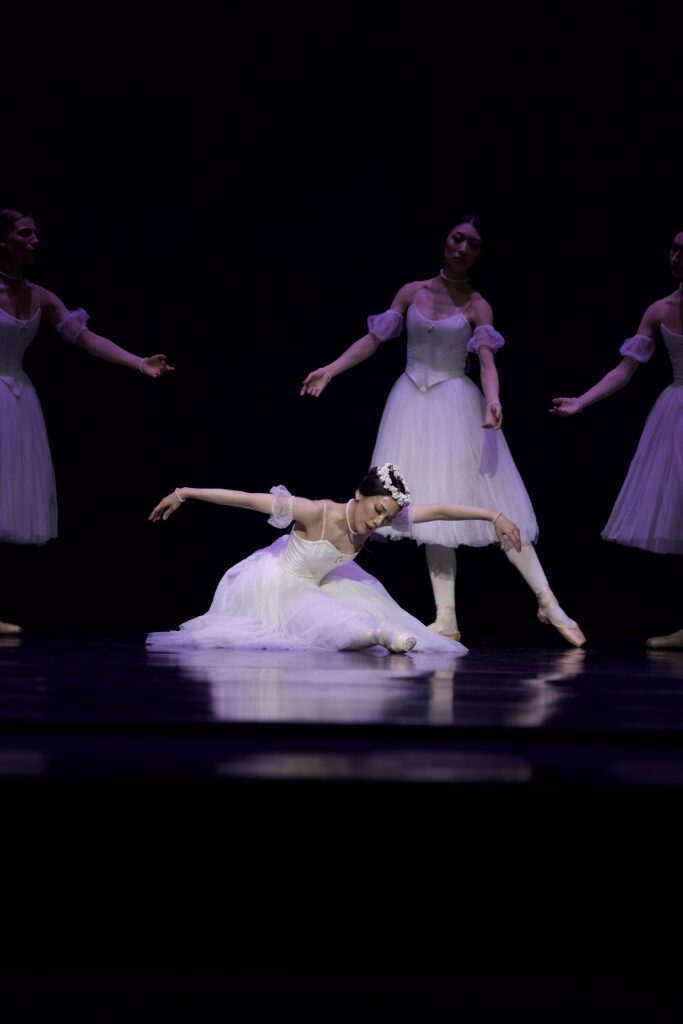
Luna Sasaki in Alberta Ballet’s La Sylphide. Photo: Aaron Anker
The results belied the short timeframe. There was perhaps a little imprecision in the dense footwork here and there, and some tentative use of the arms (Bournonville’s port de bras is distinctive: arms are carried low and remain soft and modest). But the mime was effective and Ventriglia’s own choreographic additions — especially an Act 1 dance for the men with swirling kilts (terrific costumes purchased from the Florence Opera House) — were highly successful.
The ballet opens early on the wedding morning of James, found dozing in a chair before the fireplace of his Scottish hall (suitably atmospheric sets by Alberta Ballet’s own Malgorzata Szablowska), and a local village girl named Effie. Kneeling beside him now, though, is not his wholesome fiancée but a beautiful, winged Sylph with whom James swiftly falls in love, despite the fact that she clearly comes from another world (few mortals could so quickly vanish up a chimney).
Theirs is a doomed love, of course, even without the machinations of Madge, an aged witch who James orders out of the house during the wedding preparations. Madge’s grudge against James will lead to his rival, Gurn, ending up with the mortal Effie, and the immortal Sylphide dying in the arms of her sister Sylphs. At the end, James, having lost everything, lies prostrate on the stage, with Madge above him, cackling in pleasure at tricking the young buck into killing his true love.
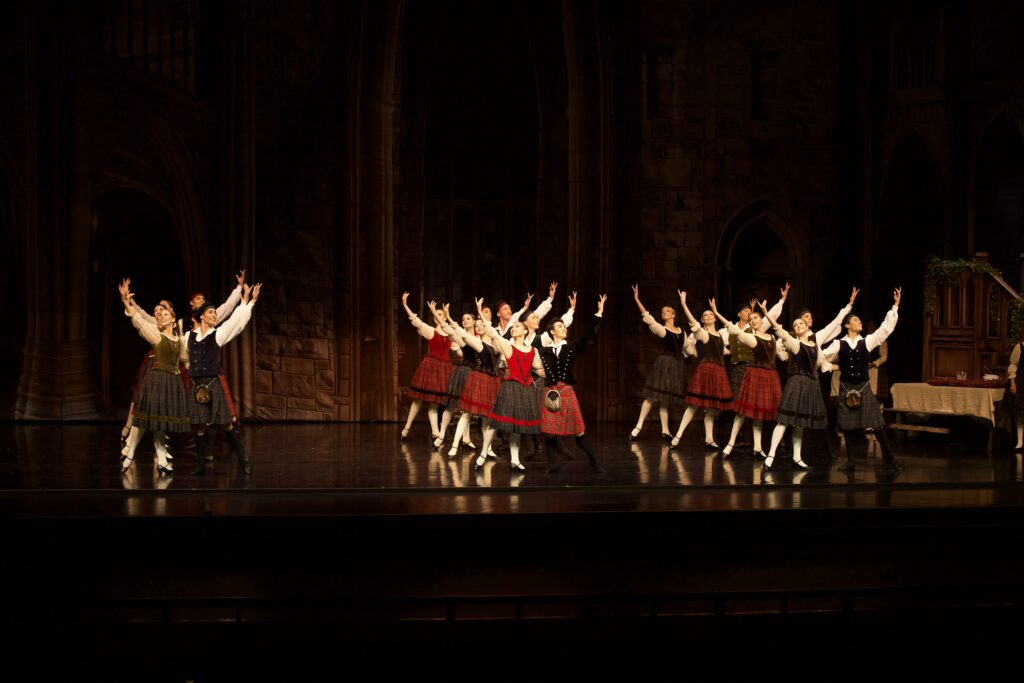
Artists of Alberta Ballet in La Sylphide. Photo: Aaron Anker
A lot can be read into this story, but it’s better to resist all moral lessons and simply enjoy the unflashy yet intricate choreography and the expressive Løvenskjold score, heard in a recording by the Royal Danish Orchestra. And, of course, the accomplished dancers of Alberta Ballet.
Principal Lang Ma danced a light-footed James on opening night, with the luminous Luna Sasaki as the Sylph. The Sept. 14th performance featured Kurtis Grimaldi and the cooler Alexandra Hughes as the Sylph.
Principals master Sylphide style
The Bournonville style requires Sasaki and Hughes to float on their toes, unaided and in rhythm to the music, for scarily long stretches. They also have to master endless, immensely graceful rond de jambe en l’air sautés, a jump where one foot circles in the air. Both dancers delivered the ethereal elegance that any good Sylph requires, but Sasaki added a dash more of playfulness and charm.
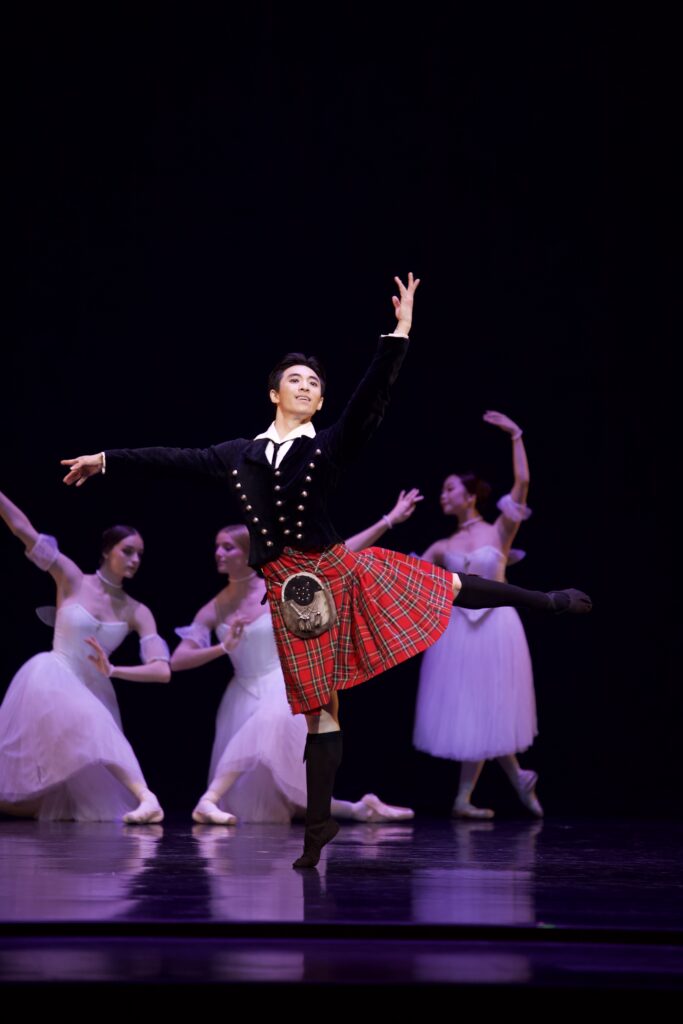
Lang Ma in Alberta Ballet’s La Sylphide. Photo: Aaron Anker
Lang Ma showed great flair in dealing with Bournonville’s extensive use of batterie — beating of the legs in the air — and confidently held the choreographer’s signature landing, in fifth position with arms down. Grimaldi’s movement felt a touch less nimble and more modern (his greater height?), but he was powerful and in control through even the most complex footwork passages.
Gurn, danced by Matthew Maxwell, was an opening night stand-out, while each witch (Caleb Durbin on opening and Yaroslav Khudych the next night) brought his own flavour of menace. Of note too: Ventriglia’s genius idea to invite the Regimental Pipes and Drums of the Calgary Highlanders to play on the lip of the stage before the show began. It was dramatic and stirring and very, very Scottish.
Alberta Ballet’s La Sylphide is presented at Edmonton’s Northern Jubilee Auditorium on September 20 and 21, 2024.

